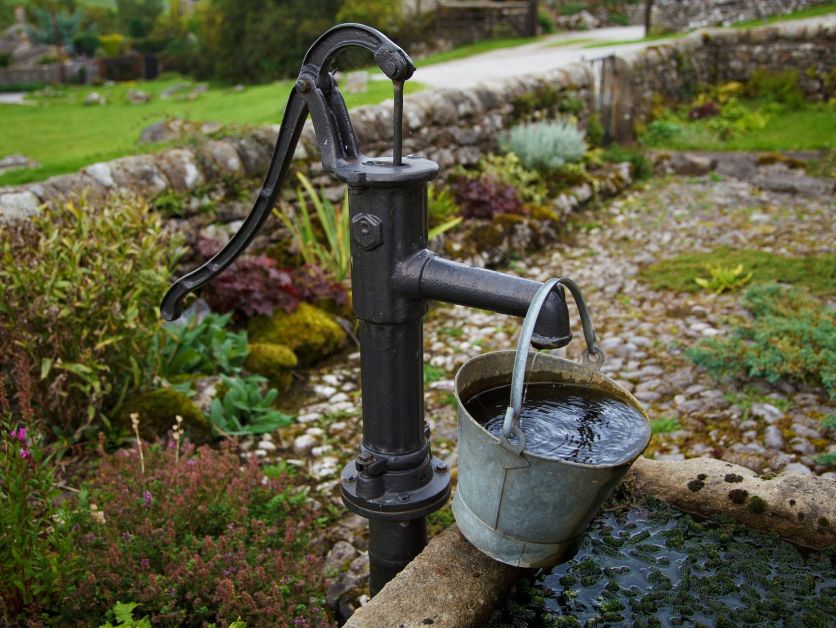Outreach, education and providing clean water to vulnerable populations are at the core of a Minnesota work plan to address elevated nitrate levels in the southeastern part of the state, with a look at agricultural practices as part of a longer-term response.
In April, a group of environmental organizations and well owners petitioned the Environmental Protection Agency seeking enforcement of the federal Safe Drinking Water Act in the state. They argued Minnesota needed to take immediate action to address public health because a significant portion of private wells in the southeast part of the state exceed the maximum contaminant level (MCL) of 10 parts per million.
The groups linked the nitrate issues to agriculture.
“Industrial farming practices — [concentrated animal feeding operations] and row crops — have led to rising nitrate levels in drinking water across the state, but the concentrations are particularly high in the karst region, where the unique geology of the land allows nitrogen spread on agricultural fields through manure and commercial fertilizer to rapidly infiltrate groundwater,” they said in a news release when the petition was filed.
Initial reaction to the work plan was mixed. Warren Formo, executive director of the Minnesota Agricultural Water Resource Center, said the plan addresses key issues but “I expect there will be much discussion on details in coming months.”
In an interview before the Friday release of the report, Formo argued voluntary and regulatory changes, such as a prohibition on fall applications of nitrogen in the region, have had positive effects.
“We know that farmers in that region … are following university guidelines very closely,” Formo said. “And we know there is data that shows that on wells that are in aquifers with younger water, say within the last 20 years or so, there's a declining trend in nitrate levels, which tells us that modern ag practices are helping address the issue.”
“Our main message to rural residents and … farmers is that the safety of drinking water is important,” Formo said. “So if you're on a private well, you should test it. And if it has concerning levels of nitrates in this situation, take appropriate action to treat it, or have an alternative source of drinking water.” In a recent column, Formo said the petition uses a “skewed analysis” of state testing data to make its case.
Jeffrey Broberg, director of petitioner the Minnesota Well Owners Organization, agreed on the need for testing, but said he had not seen data showing declining nitrate levels. In fact, in some townships in the southeastern region, up to 60% of private wells have nitrates above 10 ppm, he said.
Both Broberg and Carly Griffith, water program director at the Minnesota Center for Environmental Advocacy, said they were pleased with the work plan's focus on health awareness and education.
 Carly Griffith, Minnesota Center for Environmental Advocacy
Carly Griffith, Minnesota Center for Environmental Advocacy“The deficiency is that it’s not a uniform statewide approach,” Broberg said. “It's still kind of confined to the health department.” He called for a “unified narrative” that would encompass the other state agencies that deal with water issues.
He also said the state seems to want to do more with the same amount of resources.
“We were surprised for the health department to say that for all of the things they plan, they already have money from the Clean Water Fund. Well, why haven't you done it, then?” he asked.
He also said the state may be overly optimistic in seeking to test 10% of private wells in the karst region in the first year of the plan. “That … is a number between 4,000 and 6,500. Nobody has ever been able to do that before, ever.”
Griffith was more critical of the work plan's relegation of ag's role in nitrate pollution to the “long term” phase.
She contends the public health measures announced by MDH fail to address “the root cause of the problem, which is the persistent contamination of groundwater aquifers in the karst. And a large contributor to that problem is land-use practices, specifically land application of manure and fertilizer.”
EPA says about 12% of the wells in the karst region, named for its porous geology, are above the 10 ppm threshold. Responding to the petition in November, EPA directed the state to address “immediate health concerns regarding nitrate contamination in drinking water in the karst region,” but also said Minnesota must “develop and implement a long-term solution to achieve reductions in nitrate concentrations in drinking water supplies.”
Cut through the clutter! We deliver the news you need to stay informed about farm, food and rural issues. Sign up for a FREE month of Agri-Pulse here.
“Drinking water contaminated with nitrate has well-documented adverse health risks including a variety of cancers, ‘blue-baby syndrome,’ and reproductive problems,” the petition said.
In the plan posted on the Minnesota Department of Health’s website, the state says it is “still exploring funding and distribution mechanisms for centralized or bottled water for residences where water tests show an exceedance of the MCL for nitrate in the private well with priority for vulnerable populations,” such as homes with infants or pregnant women.
“Drinking water will be offered as soon as practical to each residence where water tests show an exceedance of the MCL for nitrate in the private well,” the plan said.
Long term, the Minnesota Department of Agriculture and Minnesota Pollution Control Agency (MPCA) will “develop and jointly lead a task force to address nitrate in southeast Minnesota. The MDH and the Board of Water and Soil Resources will partner on this effort.”
The state also said it would continue with the current revision of its existing Nutrient Reduction Strategy, which has been in place since 2014. Specifically, it plans to review current science on agricultural best management practices and “continuous living cover” options.
The state ag department “will identify feasible alternative approaches [to] reduce nutrient losses to waters from cropland areas,” the workplan says.
Also in the agricultural realm, the state is in the process of examining two types of feedlot permits — a State Disposal System permit and the National Pollutant Discharge Elimination System (NPDES) permit. The SDS permit expires in 2025, the NPDES permit in 2026. A public hearing is scheduled for Jan. 29.
Griffith noted that EPA's “directive” to the state called for “a long-term solution to achieve reductions in nitrate concentrations in drinking water supplies” and called for strengthening its permit for CAFOs in the region.
“We need not only a review of our regulatory tools, we need to actually strengthen them for manure and fertilizer to respond to the vulnerabilities in the karst,” she said.
As part of the permit development, MPCA is considering monitoring, as directed by EPA, and approaches used by other states that address nitrate contamination.
The MPCA also plans to “conduct a multi-year process to review state feedlot rules,” which will include additional BMPs for land application in sensitive areas such as vulnerable drinking water supply management areas; areas with shallow depth to karst bedrock, and areas with coarse soils.
MPCA also will consider requiring smaller feedlots to submit manure management plans, increase manure application setbacks, and change nutrient rate requirements for manure application.
For more news, go to Agri-Pulse.com.


